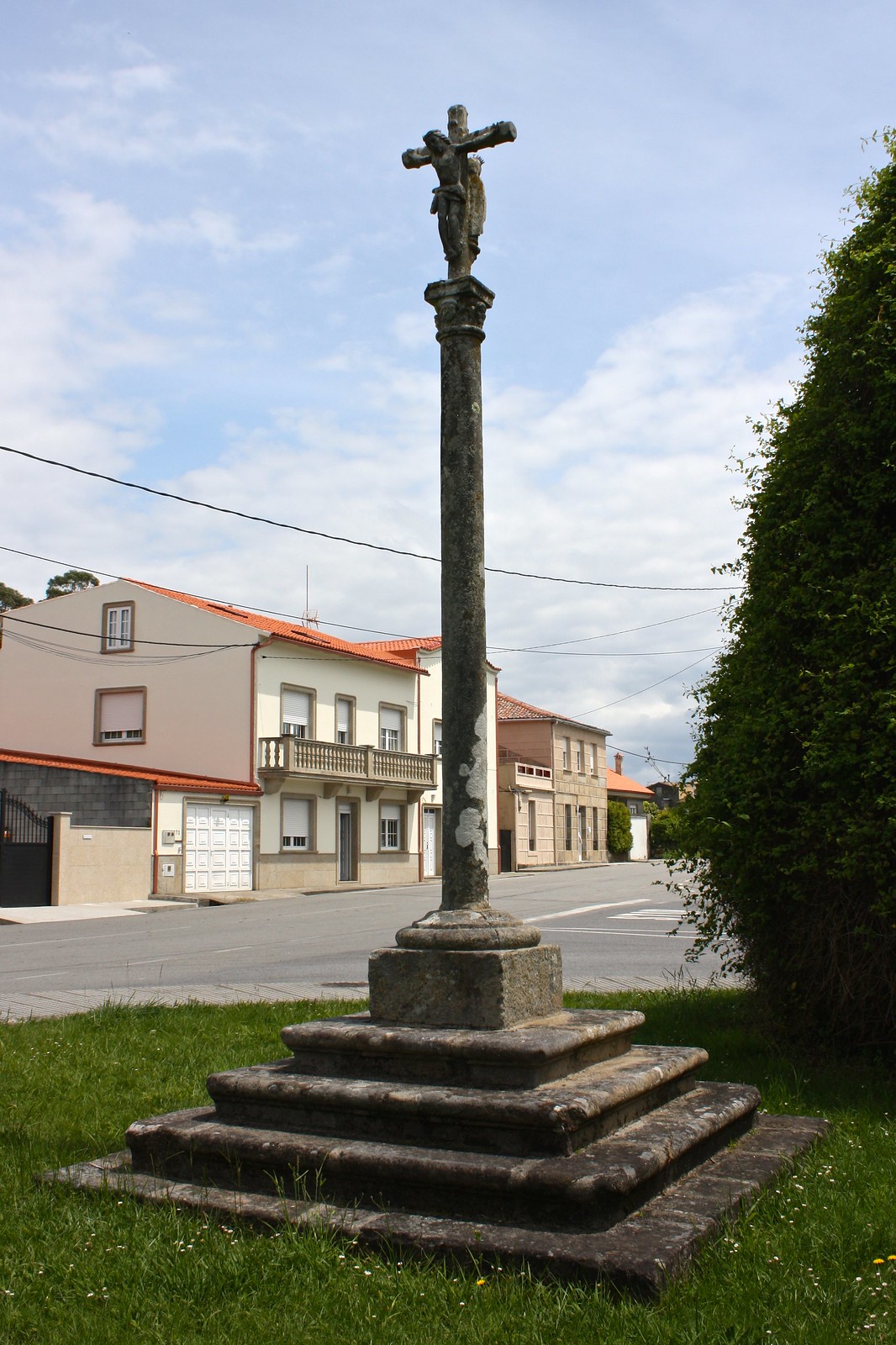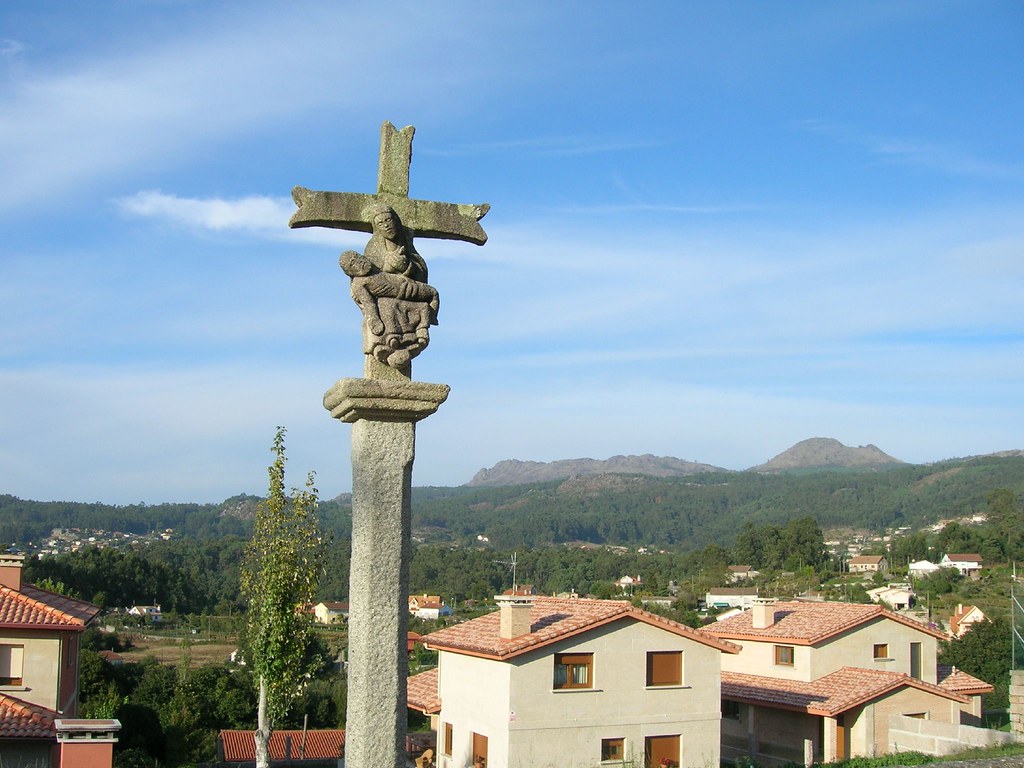Photo Post: Cruceiros, or Galician Crossroad Crosses
The word “cruceiro” in the Galician language has a double meaning: on one hand, it can simply mean the place where two roads meet, but on the other hand, it can refer to granite stone crosses that often accompany said crossroads. Pronounced “kroo-THAY-EE-roe” [kɾuˈθej.ɾo], these monumental crosses guard intersections and also show up in cathedral cloisters and on residential property in rural Galicia.
 |
| Cruceiro in Abanqueiro |
My Guía Azul guidebook to Galicia describes how cruceiros came about:
The cruceiros’ origin can be traced back to the lares (laribus vialibus) or gods of the hearth that magically protected the road and to whom the Romans dedicated altars with inscriptions, mainly building them by crossroads. Ancient Galicians would light candles on the altars because they believed they were connected with the underworld. As the Christianization of the region progressed, said altars were torn down and the cruceiros were put up in their place. (Translated from Spanish, p. 47)
 |
| (Source: José Antonio Gil Martínez) |
Today, cruceiros add a nice artistic and religious touch to both urban and rural Galicia. Often, you can see small sculptures of Christ on the cross on one side and a Madonna and Child on the other. Although many are plain and simple, quite a few are ornately decorated and several date back to medieval times.
Have you ever encountered cruceiros in or outside of Galicia? Tell me what you think of these sculptures below in the discussion thread!